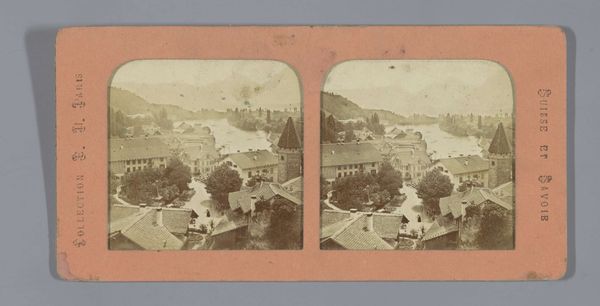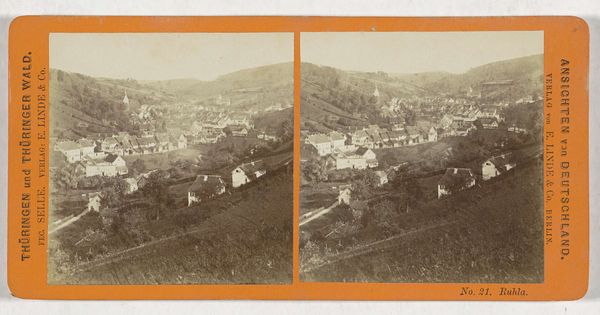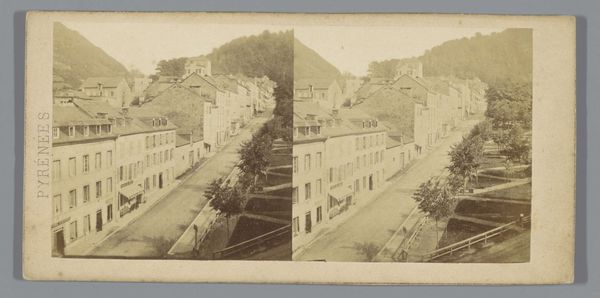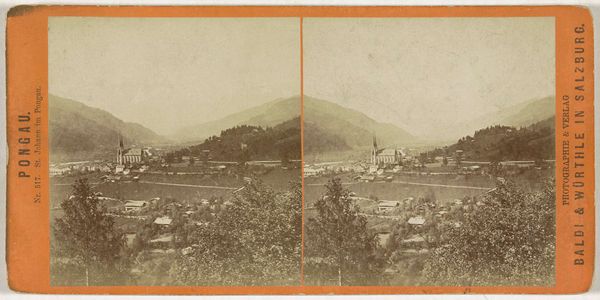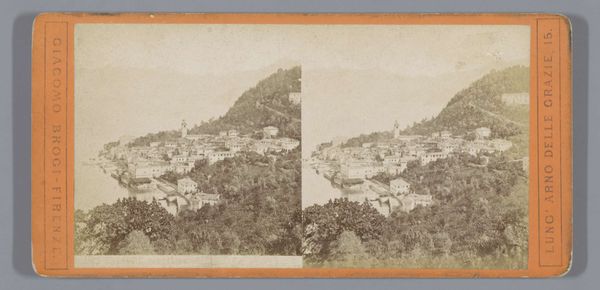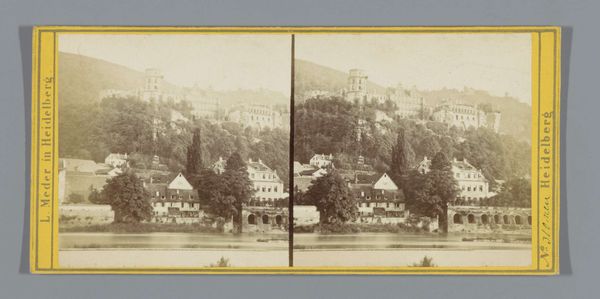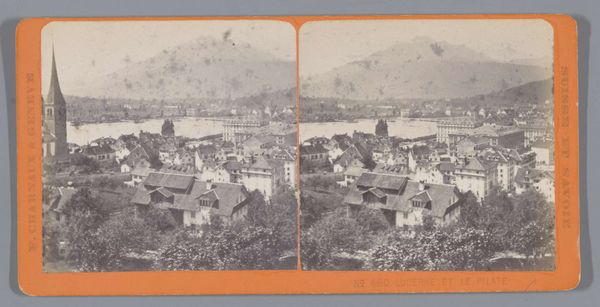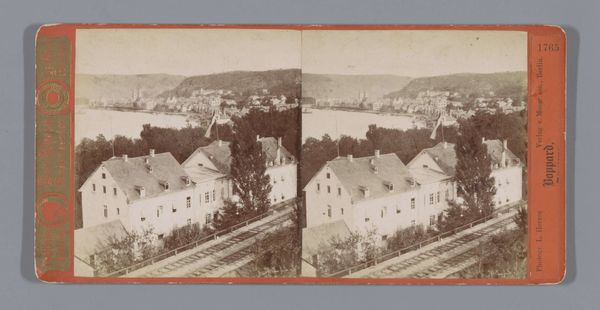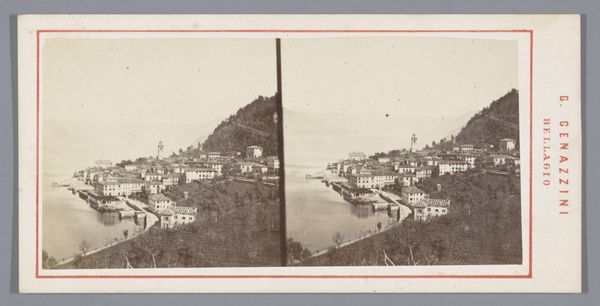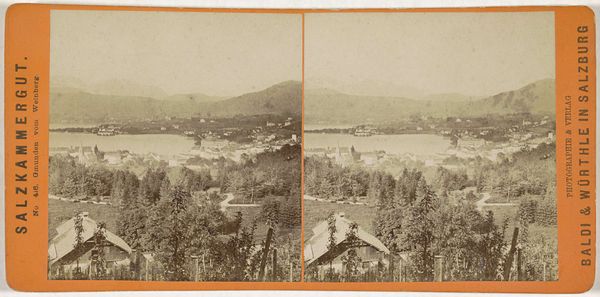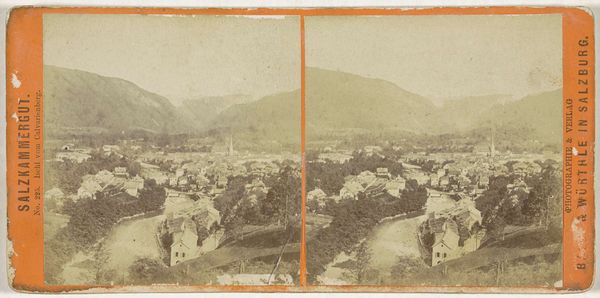
Dimensions: height 85 mm, width 170 mm
Copyright: Rijks Museum: Open Domain
Curator: Before us, we have a striking landscape photograph, titled "Gezicht op Brienz en de Brienzersee," believed to have been taken by Florentin Charnaux after 1873. Editor: It has a tranquil yet melancholy feel. The pale tones, almost sepia, give the scene a dreamlike quality, blurring the details just enough. Curator: Precisely. As an albumen print, this photograph exemplifies pictorialism through its manipulation of tonal range and focus, mimicking artistic techniques common in painting to elevate photography as fine art. Consider how the sharp focus on the architecture directs our eye. Editor: But look at what isn’t highlighted. The subdued lighting obscures many of the structures and backgrounds. Does that signify the socio-economic circumstances influencing Brienz and its accessibility at the time? Is this aesthetic choice deliberately mirroring social restrictions or limitations, rather than merely pursuing beauty? Curator: An interesting viewpoint. Considering composition, the use of linear perspective guides our eye deep into the pictorial space, a strategic move to enhance depth, with a convergence point carefully situated by Charnaux to maintain visual equilibrium between the town and the vast Brienzersee. Editor: Beyond composition, one must contextualize photography’s evolution within art history. Pictorialism gained prominence advocating for the expressive potential of photography to compete in art exhibition circles. But to what extent was access genuinely democratized if cameras remained exclusively for the well-to-do and artists themselves predominantly from the elite echelons? Curator: That social undercurrent indeed played a huge role. But the artistry itself presents us with fascinating questions of perception and intentionality, particularly in an era grappling with burgeoning industrialization and nostalgic sentiments for simpler rural existences. The photographic object provides data about texture, shape, and space; our readings thereof are inherently mediated. Editor: I concede that an informed consideration of this photograph, beyond its structural elements, necessitates grappling with broader historical, social, and cultural debates swirling in artistic milieus. I think understanding how the art reflects its surrounding historical and social dynamics grants more than aesthetic enjoyment, it illuminates perspectives previously opaque. Curator: Agreed. To delve deeper than purely aesthetic considerations is necessary for a thorough appreciation. Editor: Yes. This piece certainly sparks the kind of complex and layered inquiry one hopes for.
Comments
No comments
Be the first to comment and join the conversation on the ultimate creative platform.
